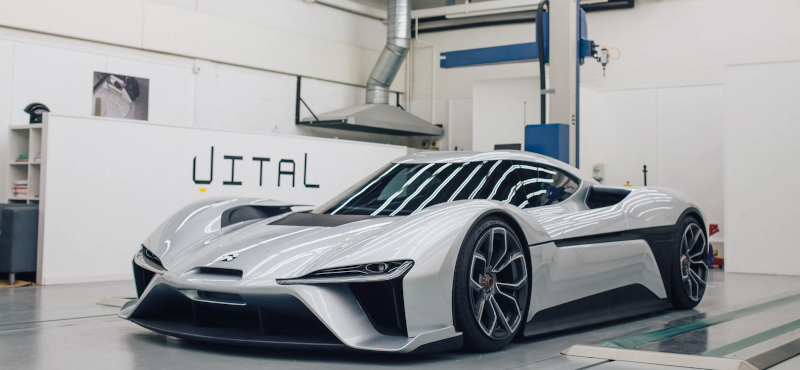When you want to fabricate something you either start with something and take away what you don’t want — subtractive manufacturing — or you start with nothing and add material, which is additive manufacturing that we usually call 3D printing. Popular Science recently took a look inside Vital Auto, the British lab that uses 3D printing for high-end concept cars from companies like Rolls-Royce, McLauren, Jaguar, and others. In the video below, [Anthony Barnicott], an engineer for Vital, says that the two technologies — additive and subtractive — work best when used together.
As you might expect, they are not using a $200 FDM printer. They have three Formlabs 3Ls that print with resin and five Formlab Fuse 1 selective laser sintering printers. While metal printers are still uncommon in hacker’s workshops, resin printers are now very affordable although your garage printer is probably a good bit smaller than the 3L’s 335x200x300 mm volume. For comparison, an LCD-based AnyCubic Photon X provides just 165x132x80 mm. Of course, you’re looking at about $11,000 for the dual-laser 3L versus about $240 for the Photon.
Vital started building the EP9 electric car concept for NIO, an electric car maker in China. You can imagine that modern manufacturing machines make it possible to create more sophisticated concept cars faster. How many times do you want to tweak a part that takes a machinist eight hours to produce? But if you can just let a machine run overnight and get the result in the morning, you are more likely to change and refine the part.
Vital Auto is an interesting look at how professional fabrication shops are using the same technologies we do, at least at the core. We’ve noted before how these same technologies are making homebrew projects look better than some commercial products not long ago. You can print big things if you break them up, of course. Or, break the bank and buy a really big printer.

















It is all fine and handy for prototyping. At some point they’ll need to be able to mass produce the new design using cost effective conventional techniques. i.e. Sheet metals bend, pressed etc to whatever the final shape would look like.
How many concept car actually made it to production?
https://www.popularmechanics.com/cars/g929/11-concept-cars-that-should-have-made-it/
People always complain about concept cars not makng it to production but that’s missing the point – nothing from the Paris catwalks makes it onto high street chain store clothing rails either (and it wouldn’t be wearable if it did), it’s about setting a direction or style or theme, and picking up a few details or features that *do* make it through to the product range.
Interestingly, Jaguar Land Rover are known for saying they don’t make concept cars, and Land Rover certainly have taken more than one “concept” fairly directly through to production with minimal tweaks. The Range Stormer prototype made it fairly unscathed into production as the hugely successful Range Rover Sport, and the DC100 was pretty close to what is now the New Defender.
DC100 didn’t really land and the final defender was quite different. But LRX became Evoque with even fewer changes than Stormer so your point stands.
Sometimes car companies call something a concept when actually they know they are going to productionise it. The clue is the wipers. If a concept car has windscreen wipers, the company are a pretty long way down the road to manufacturing it.
With all due respect, there’s a false dichotomy here:
“How many times do you want to tweak a part that takes a machinist eight hours to produce? But if you can just let a machine run overnight and get the result in the morning, you are more likely to change and refine the part.”
As you implied in your opener, additive and subtractive manufacturing are essentially identical but for directionally – one adds, the other subtracts. CNC machining does not involve a machinist laboriously guiding a cutting operation, no more than 3D printing requires an operator to lovingly lay down later after layer of molten material. Both are set-it-and-forget-it, computer-driven operations. Both “…let the machine run overnight and get the result in the morning…”. Both will occasionally deliver imperfect results and require repeat attempts.
Neither holds a monopoly on productivity, turnover, or rework.
Example:
https://youtu.be/RnIvhlKT7SY
As someone familier with both worlds I can guarantee you, that there are huge differences.
Material preperation (ordering or cutting the right sized blank in the right alloy), Tooling preperation (ordering the right tools, setting up the machine so it knows what tool is where, etc), creating the Cutting paths (CAM Software is good, but no comparison to a 3D Printing Slicer), Cost of the Machine, Tooling and Material. Everything is more expensive without even touching the machine. Also you should not let a CNC-Mill run unattended unless you have your setup absolute error proof with tool break checks in front of every tool change and similar procedures.
Most 3D Printers have a “set it and forget it” style of user experience. Once your Slicer profile is good enough you can start a print in a matter of minutes.
I’m sorry, but you’re full of it. Saying a 3D slicer is miles better than CAM software for a CNC machine… where to begin. Sorry but you might be “someone familiar with both worlds”, but you’ve got no experience of tooling manufacturing and maybe a3d printer at home.